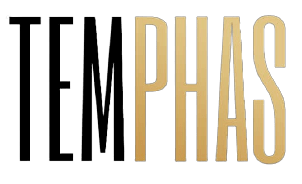The best business casual looks for a professional

Men’s business casual wear is, at its core, a larger and more liberated version of the classic business attire you see in movies and television shows. In other words, unless you’re a lawyer or an accountant, you’ll probably have to wear it to work. How do you outfit yourself for office and business success now that it’s become the default professional wear for men? Let’s take a closer look at professional men’s clothing and how to make it work for you.
Dress regulations are adapting to modern times in the same way that earlier generations’ working norms have. Consider the men’s business casual dress code, which is a broader and thus more liberated version of the formal outfit. You’re on the right track if you’re wearing a cotton blazer with a dress shirt and no tie.
Nonetheless, the business casual dress code is a nebulous idea with no clearly established standards or concepts. When it comes to business casual trousers, coats, slacks, and corporate office clothing, for example, it’s difficult to determine what’s appropriate.
With such broad guidelines, it’s no surprise that many professional men are still unsure about what constitutes the men’s business casual dress code.
What is Men’s Business Casual Attire?
Business casual attire is defined as a style that isn’t nearly as formal as typical workplace attire but yet conveys a professional or business-like impression. That, of course, gives a lot of space for interpretation.
The word “casual” isn’t helping matters, as it conjures up images of guys in Hawaiian t-shirts, shorts, and sandals. To which we would respond, simply try wearing truly casual clothing to work on a daily workday and see how far you get. To put it another way, business casual is still significantly more “business” than “casual,” which is a good thing.
As a result, even when wearing business casual attire, you must adhere to the traditional ideals of elegance and sophistication. Whereas business professional attire used to be defined by oxford shirts and stuffy suit coats, it has evolved into a more sophisticated workplace look. A blazer (ideally fitted) and a dress shirt are always safe bets. Ties are optional, but you should make up for your lack of neckwear with your fashion savvy. And, while some business casual-friendly offices allow nice jeans, make sure they’re truly fine pants.
Otherwise, stick to high-quality trousers like cotton chinos for a professional look. Comfortable dress shoes such as loafers, Oxfords, monk straps, and derbies are easy to adhere to in the shoe section. Also, don’t forget to double-check that everything is in order.
What do most people think of when they think of men’s business casual attire? Think:
Shirts
Short sleeves are acceptable, but they must be buttoned down. Polo necks are a contentious topic that varies depending on the workplace. Shirts with collars, sports jackets, and sweaters are acceptable. A long-sleeved shirt is normally acceptable, but if it’s a ‘fancier’ shirt, it’s becoming too formal. Ties and shirts that can’t be worn without one are normally prohibited, however there are certain exceptions.
Trousers
There are business casual mens’ shorts and other daring looks in fashion-forward workplaces. However, those are better left to specialized workplaces and individuals who aren’t afraid to push the bounds of fashionability. Most of us think of professional, casual pants as semi-formal designs like chinos, dress slacks, or dark jeans that don’t seem like denim.
Shoes
Men’s business outfit will nearly always accommodate dark leather loafers and casual dress shoes. Sneakers are flirting on the verge of being fashionable. Tennis shoes and your latest Nike kicks will not fit into business casual (especially in less formal industries like technology), but well-styled, non-flashy sneakers in a dark color, as non-sporting as possible, will.
Jackets
A jacket may be worn with some non formal ideas for men (we have discussed the sports coat), but it is generally not recommended. Of course, this is contingent on the weather. While a sport coat is necessary sometimes, make it elegant but not formal.
Decoding the business casual dress code
1. Determine whether your work is more formal or not
Here’s the annoying thing: Different industries define business casual differently. If you work in technology, you may relax a lot more and have more outfit options. If you work in academia or finance, you’re probably only a few steps away from donning a full-fledged suit and tie.
2. To determine whether something is casual or formal, apply the “more means more casual” rule
“How am I supposed to tell if something is too casual?” To answer this question, you don’t need to spend 15 years studying fashion. To swiftly determine whether an item of clothing is “casual” or “formal,” you just need to comprehend a few basic concepts (e.g., more business).
There are a few general rules that we should all be aware of. Dress trousers and button-down shirts are more formal than t-shirts and jeans, as we all know. But what if we had to choose between two items that are very similar, such as a button-down shirt and a button-up shirt?
